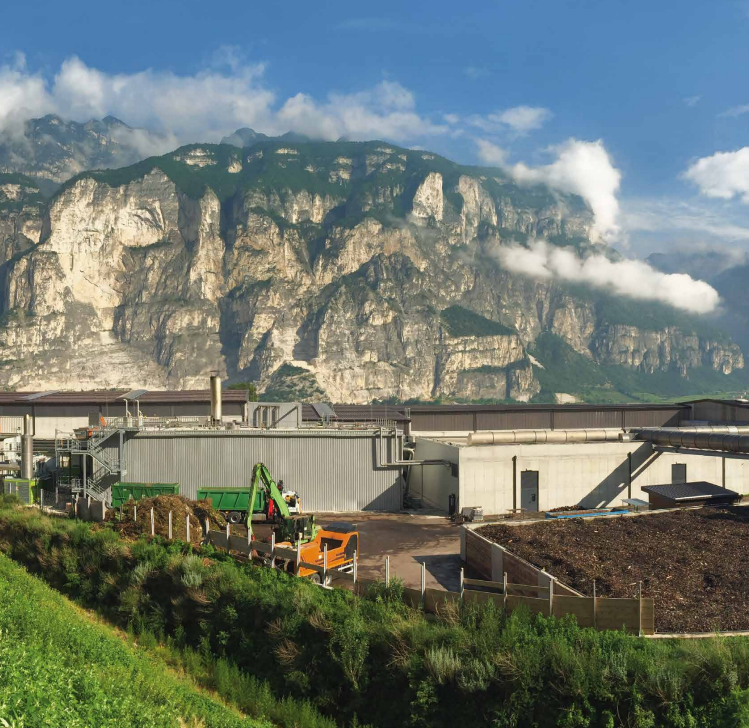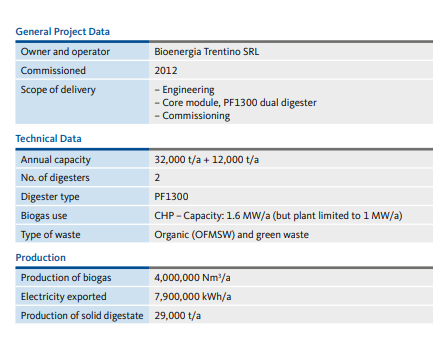Faedo / Italy
Faedo / Italy
Faedo – Presswater-Free Organic Waste Fermentation Plant

In 2012 Kompogas installed Italy’s first dry fermentation plant for biowaste together with the Italian partner CESARO MAC Import, the company that invented the Cesaro/Il Girasole® tunnel composting system. The plant converts fermented digestate into solid fresh compost with no residual process water in a system already used successfully in many Kompogas® plants.
Special Local Circumstances
In light of the specific regional, geological and topographic features of the area Trentino-South Tyrol, the authorities have prohibited the use of liquid digestate from the fermentation of organic waste as a fertilizer. This means farmers can only use dry substrates such as fresh compost. Another local peculiarity is the organic waste itself, which consists primarily of food and kitchen waste left out in plastic bags or wooden crates for collection several times a week – a system that has become firmly established in northern Italy and which enjoys a high degree of public acceptance. The above-average organic fraction means this substrate is particularly moist and lacking in structure, but at the same time extremely rich in energy. The Kompogas® fermenter uses this to generate more than 170 Nm3/t fresh mass.
Solution Tailored to Unique Circumstances
Kanadevia Inova responded to these circumstances with presswater-free organic waste treatment technology based on the energy-efficient Kompogas® continuous dry fermentation process. Unlike standard methods which use a dewatering press to separate the digestate into solid and liquid fractions following fermentation in the digester, in this process the digestate (which cannot be stacked) is mixed with shredded green waste and coarsely structured sieved fraction from the composting process. The mixture then undergoes an intense two-week closed tunnel composting process. This aerobic treatment substantially increases the dry material content by evaporating water due to self-heating of the biological activity.
Top-Quality Compost
After a further three weeks of stabilization on windrows, the material has matured into an excellent, top-quality compost. This is then sieved into two categories. The coarse fraction of the compost with particles exceeding a certain diameter is mixed back into the fresh digestate from the digester. By contrast the fine fraction leaving the continuous dry fermentation process is sanitized and stable to be used as a rich source of nutrients and humus. Local producers pick it up from the plant for use on farms and fruit orchards and the steep, sunny slopes of the Trentino and South Tirol vineyards. Further Kompogas® presswater free plants are in operation in Germany and the Netherlands.
